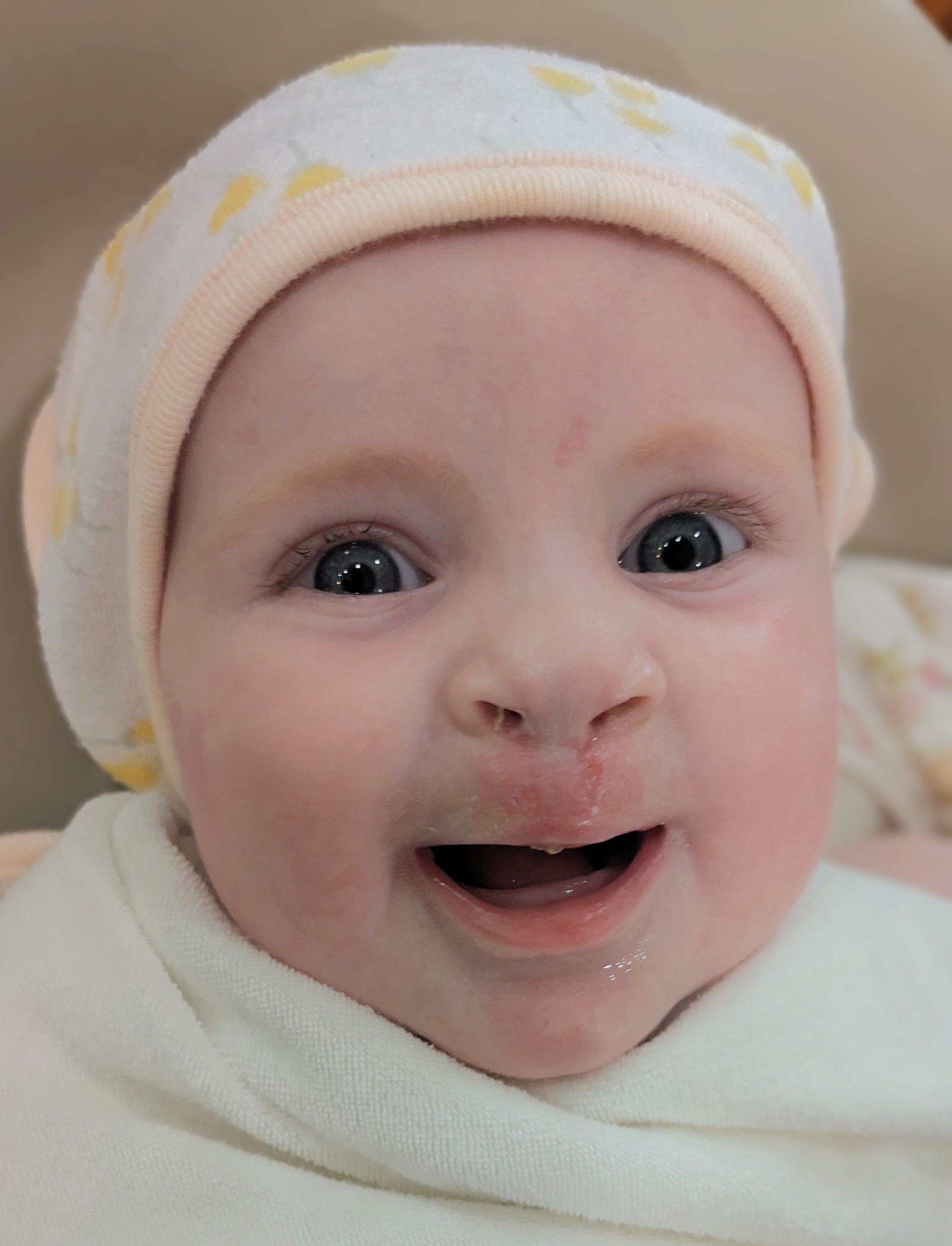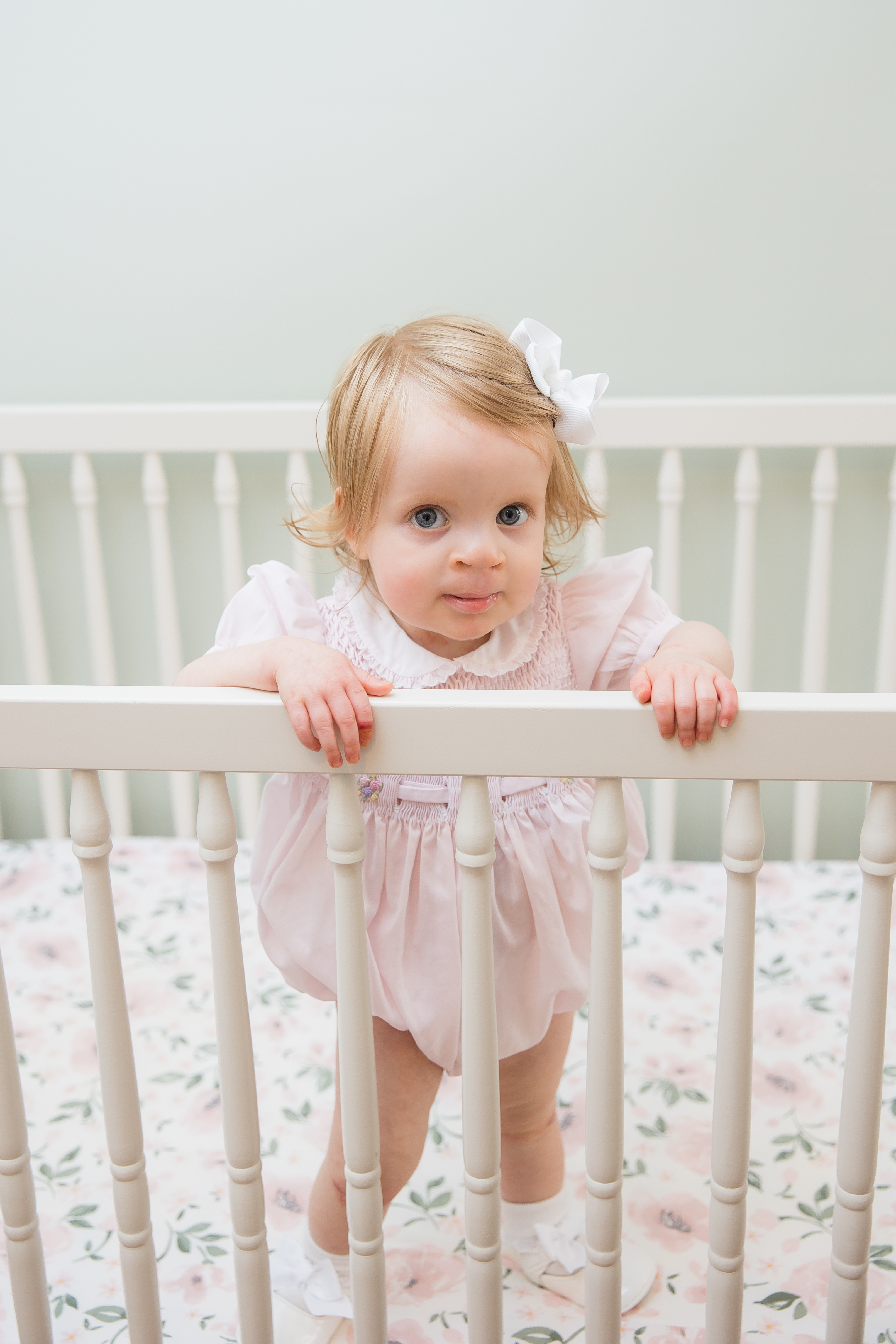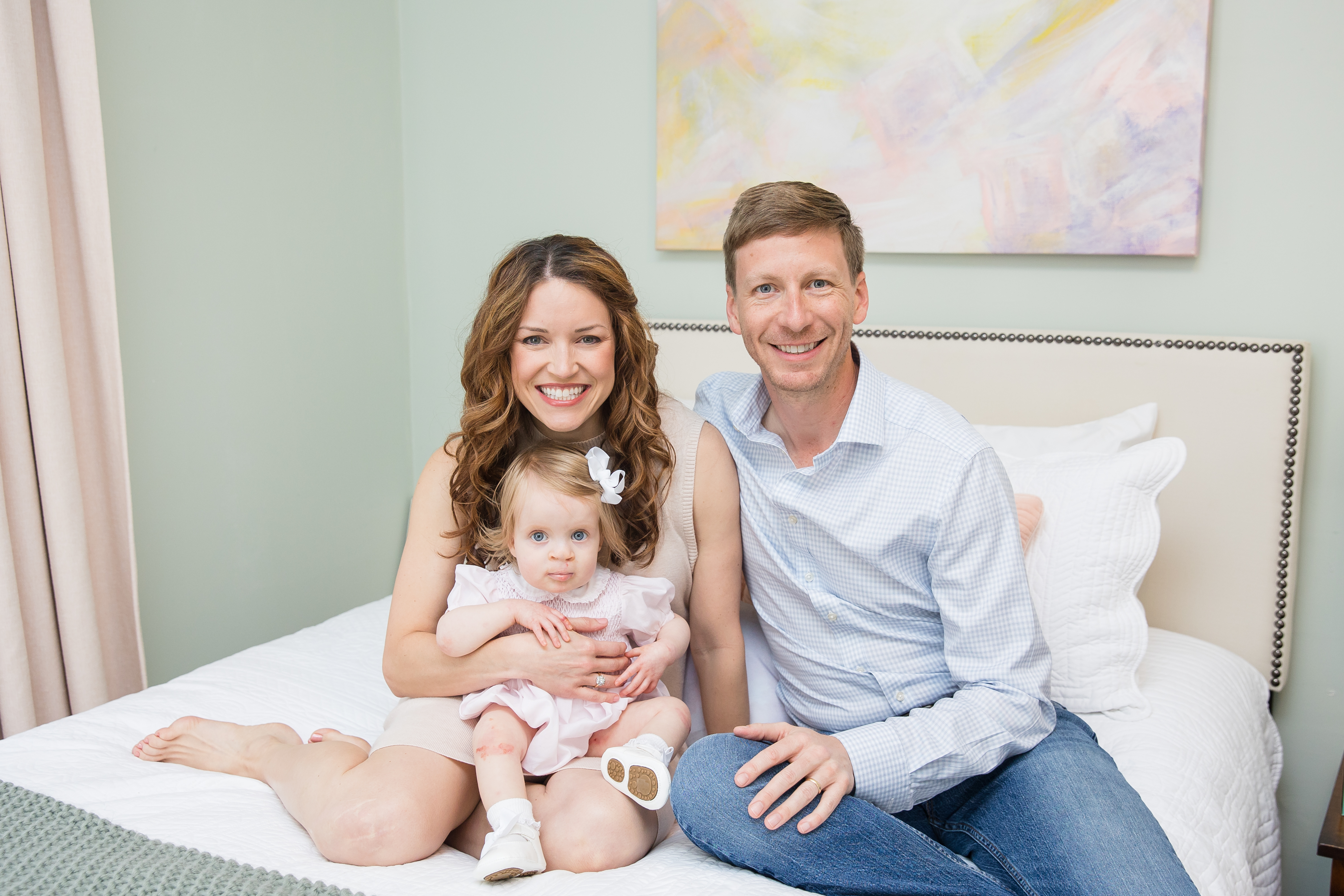Julianna’s Story: Unforeseen challenges and unwavering support through a bilateral cleft lip and palate diagnosis
- Category: Patient Stories
- Posted on:

In early 2022, Emily Holladay was halfway through her pregnancy and was excited about her 20-week anatomy scan, which measures the baby’s growth and development. However, the results of the scan brought unexpected news that neither Emily nor her husband Ross were prepared for. The scan revealed that their baby had a cleft lip, a condition characterized by an opening or separation in the upper lip occurring when the facial structures developing in an unborn baby do not fully close.
Both originally from New Orleans, Ross and Emily were grateful to have access to the specialized care provided by Children’s Hospital New Orleans. They were quickly referred to craniofacial pediatrician Dr. Gregory Fulton and his dedicated team. Dr. Fulton and his staff sat down with the Holladay’s and answered all of Ross and Emily's questions, providing them with comprehensive support and guidance.

“We did extensive research and considered programs across the U.S., but we ultimately chose Children’s Hospital New Orleans for its outstanding reputation,” Ross explained. “The team was exceptional. They carefully guided us through what to expect, how we might feel, and all the initial procedures. It was incredibly reassuring to know we were supported by such a vast network. At our first clinic meeting, we met 10 doctors, all of whom were not only extremely kind but also highly skilled and ready to assist us. Many of them we wouldn’t need in the first year, yet they made it a point to meet with us, ensuring us that they would be there whenever we needed them. It was truly comforting.”
InSeptember, Ross and Emily welcomed their baby girl, Julianna, to the world. Julianna’s doctors were able to confirm that not only did she have a bilateral cleft lip—meaning the opening affected both sides—but she also had a bilateral cleft palate, which meant the roof of her mouth was also not fully closed.
Soon after, they discovered that Julianna had another complication. Julianna was diagnosed with epidermolysis bullosa simplex, an extremely rare genetic disorder defined by exceptionally fragile skin that blisters and tears in response to minor injuries or friction. This condition posed not only a significant challenge for Julianna but also for her medical team, as managing her delicate condition required meticulous care and precision.
“This diagnosis was undoubtedly shocking and added layers of complexity to our situation,” Ross said. “Julianna's condition makes her skin blister very easily, and combined with her inability to feed normally, she began developing painful blisters in her mouth.”
Because of these challenges, Julianna struggled to get enough nutrients and gain weight in her first months of life. To address this, the Holladays worked with Dr. Leslie Slowikowski, DMD, a craniofacial orthodontic and dentofacial orthopedic specialist at Children’s Hospital New Orleans, who is trained to provide nasoalveolar molding (NAM). This innovative, nonsurgical technique uses an intraoral plate with nasal stents to reshape and reduce the size of the cleft, shape the nostrils, and allow the lips to come together before the cleft lip surgery, potentially reducing the need for multiple surgeries by lessening the severity of the cleft. They also hoped it would help alleviate some of Julianna’s complications and help her feed more easily. 
“In the end, NAM didn’t work for Julianna, but Dr. Leslie was extraordinary,” Ross said. “She remade the mold at least five times, working tirelessly to create something that would help Julianna eat and effectively shape her cleft. The amount of time and energy she invested in our daughter made us feel incredibly well cared for.”
At about four months of age, Julianna’s team decided it was best for her to proceed with the first surgery to address her cleft lip, which would be performed by Dr. Mohamad Masoumy, a specialist in craniofacial, plastic, and reconstructive surgery at Children’s Hospital New Orleans. This surgery, called cleft lip adhesion, aims to narrow the gap in the lip and gums and to align the nose more naturally. It is the preliminary step in a two-stage process designed to repair a child's cleft lip.
“During this initial surgery, we stitch the tissue on either side of the cleft lip together, helping to straighten the gum line and reposition the premaxilla and nose,” Dr. Masoumy explained. “This procedure converts a wide, complete, cleft lip into an incomplete cleft lip and improves the position of the lip, nose, and gums over the following three months. As the tissues heal, they become less tight, which is beneficial for the next surgery. With reduced tension on the surgical site, the second procedure, which completely repairs the muscle and cleft lip alignment, helps yield better outcomes and a smaller scar for the child.”
Due to her genetic skin condition, however, Dr. Masoumy and his team had to avoid using standard tapes and attachments during the surgery, as these would cause painful blisters and significantly set back her progress. They did extensive research and consulted with other specialty clinics to gather effective strategies for performing the surgery without harming Julianna's fragile skin. As part of these efforts, they bought specialized surgical and wound care supplies.
"The surgery was a success, and all the precautions Dr. Masoumy’s team took were effective," Ross said. "It was truly impressive to see this integrated team collaborate so effectively, taking extra care in regard to her skin condition while also performing the surgery."
After the initial surgery, Ross and Emily continued to meet regularly with Julianna’s medical team to support her feeding and growth. Three months later, Dr. Masoumy successfully performed the second lip repair, also utilizing the specialized supplies to accommodate her skin condition. Then, in October of last year, Julianna underwent her third surgery to begin repair on her cleft palate.
“Again, everybody was in tune; they all understood the limitations, and everything went well,” Ross said. “Dr. Masoumy is just a wizard as far as I’m concerned with what he’s able to do, and we felt very well cared for in the pre-op leading up to the surgery, as well as after.” 
Since Julianna’s latest surgery in October, Ross and Emily have focused on her recovery and growth, addressing some gastrointestinal concerns along the way. Looking ahead in the coming years, Julianna will undergo a series of additional surgeries to fully repair her cleft palate, including a bone graft to correct her gum line and a final rhinoplasty around the age of 16.
“Julianna continues to show considerable progress—she’s eating better and becoming more active like a typical toddler,” Ross said. “After such a challenging first year and a half, she’s finally starting to catch up developmentally and is gaining weight. We are doing well these days and are grateful for the incredible care and continued support from Children’s Hospital New Orleans.”
To learn more about craniofacial surgery at Children’s Hospital New Orleans, visit https://www.chnola.org/services/craniofacial-surgery/



